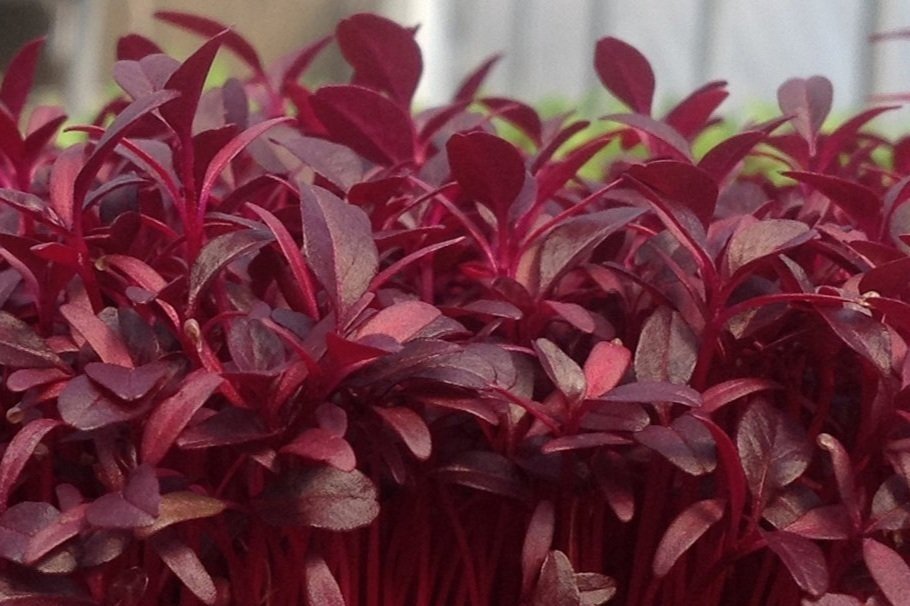Microgreens
Microgreens - An Alternative Crop Production Enterprise for Small Farmers
What are Microgreens?
Microgreens are young vegetable, herb or other edible plant seedlings. They have two fully developed cotyledon leaves and one pair of very small, partially developed true leaves. They are quick growing, relatively easy to grow, and can be grown year round. They provide intense flavors, vivid colors, and crisp textures. They are used as a visual enhancement and flavor accent.
The typical stem and leaf configuration for microgreens is about 1 to 1½ inches in height, and ½ to 1 inches in width across the top. Depending on the species being grown, microgreens can be harvested 7-21 days after germination. At harvest a microgreen includes a single central stem cut just above the soil line during harvesting.
Why Microgreens?
Recently, microgreens have gained popularity as a new culinary trend.
Depending on the crop species and time of year, microgreen have a quick production cycle of 12-18 days from sowing to harvest.
Microgreens can be grown in a small growing space.
When compared with nutritional concentrations in mature leaves, microgreens contain higher nutritional densities.
There are well over 40 different species that can be grown as microgreens.
Variety Selection
Microgreen varieties selected for growth
Fast growth (10-15 days): Arugula, broccoli, borage, cabbage, Chinese cabbage, cress, kale, kohlrabi, mizuna, mustard, radish, tatsoi, borage, celosia, salad burnet, saltwort, sorrel.
Slow growth (16-30 days): Alfalfa, amaranth, beet, carrot, chard, dandelion, magenta spreen, purslane, scallion, shungiku (chrysanthemum), basil, cilantro, fennel, dill, marigold, sorrel.
Microgreen varieties selected for color
Garnet red amaranth, garnet mustard, red beet, red radish, red cabbage, red chard, red pac choi, red orach, red shiso (perilla), red komatsuna, red kale, red basil, red veined sorrel, magenta spreen.
Microgreen varieties selected for flavor
Spicy: daikon radish (or other Asian radishes), arugula, cress, spicy mix. Mild spicy: radish, kale, mizuna, cabbage. Onion flavor - scallions. Citrus blend: lemon basil + sorrel + tangerine lace (marigold). Lemon flavor - sorrel. Carrot (textured leaves, carrot flavor). Cucumber flavor - salad burnet. Herbs: basil – different types, dill, cilantro, parsley, fennel, lemon balm, anise flavor - chervil, licorice flavor -anise, shiso.




